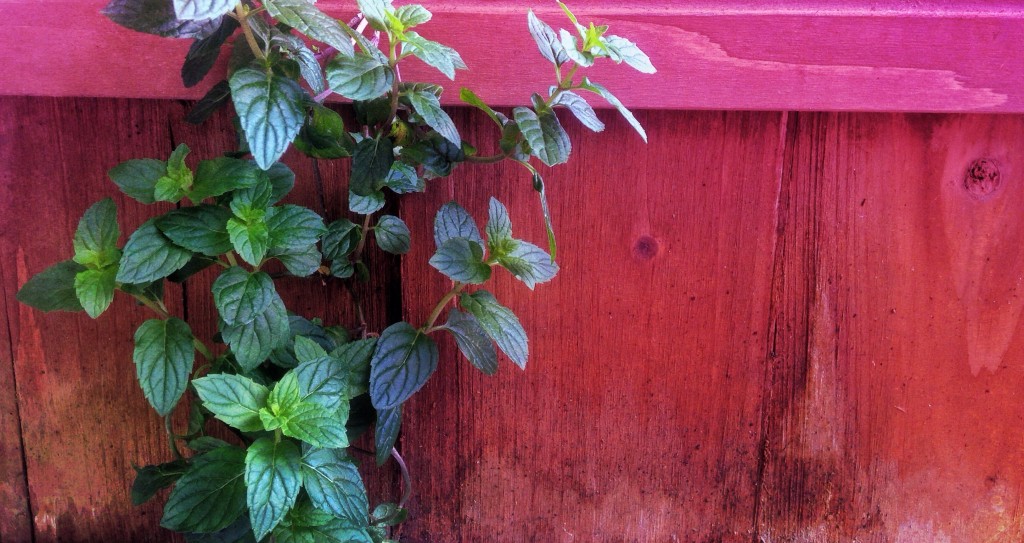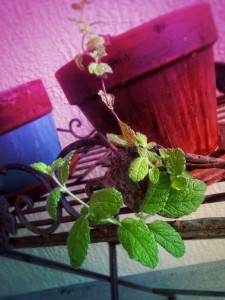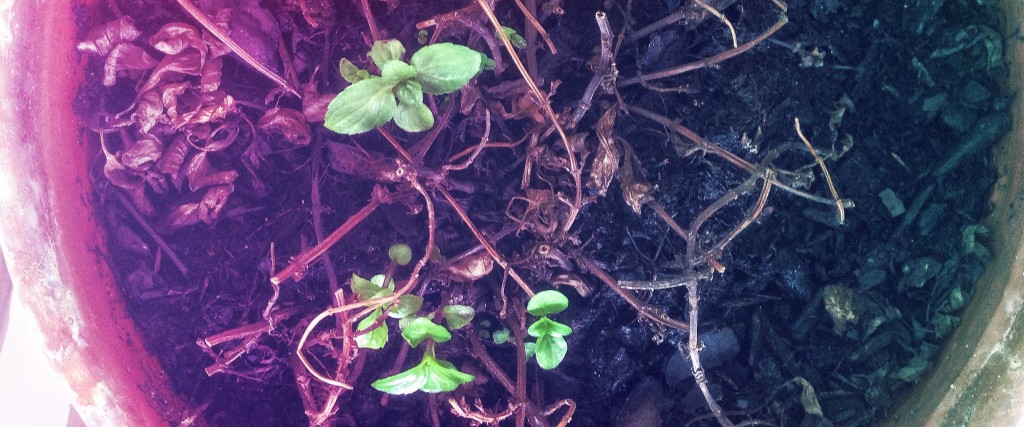
How to Kill Mint
I do not fear death. I had been dead for billions and billions of years before I was born, and had not suffered the slightest inconvenience from it.
When we think of weeds, we think of nettles stinging our feet and rogue shoots squirming all over perfectly trimmed grass; ugly and useless things. It’s easy to forget that in most places, mint is essentially a weed. There is no shortage of gardening advice warning you to plant your mint in a pot when you put it in the ground if you don’t want a permanent infestation.
Mint grown in a container is more manageable; just don’t plant anything else besides another mint in there with it. If you do it’s likely that your tiny, homicidal weed will slowly strangle its neighbor to death. Even if you confine your mint plant to its container, it’s still going to send out runners at some point to try and creep into the pots of others. I have four different kinds of mint on the patio right now, and three out of four are sending out runners on their inchworm quest to murder the weak.
But, here’s the kicker: this is the most delicious weed I’ve ever had. Mint tea is a snap, too: just take an overflowing handful of fresh mint leaves and throw them into a half gallon pot of boiling water for 5 or 6 minutes, then strain into a pitcher or teapot and enjoy. Another recipe, an absolute favorite and original of mine, is equally simple if you have access to dried hibiscus: put one handful of Cuban mint, one handful of fresh lemongrass leaves, one smaller handful of dried hibiscus, and a long squeeze of light agave syrup into an iced tea container for 10 minutes, remove the leaves, and let it sit in the fridge overnight. The fruity flavor of the hibiscus, the sweet flavor of the Cuban mint, and the light zest of lemongrass make for an awesome anytime treat.
Speaking of Cuban mint, there are nearly endless kinds to grow. On my patio right now, I also have apple mint, spearmint, and chocolate mint. Other interesting varieties include pineapple mint; which has a citrus fragrance and is festively striped white and green; Habek mint, which has long, thin leaves; and banana mint (gee, what does that smell like?). Classic peppermint is also an option.
Just make sure that you buy plants – growing mint from seed is both difficult and unrewarding. The seed takes a long time to germinate, sometimes not germinating at all, and when grown from seed, mint can sometimes develop pungent, unpleasant flavors. Buy rare varieties online or see what you can find at your local farmer’s market or plant nursery.
Whichever mint you choose, plant it in a container with a lot of surface area that’s not very deep. Mints only need 8” of depth for their roots, which means that a nice bowl-shaped planter or long, rectangular one will be really suitable for these guys. It gives them a lot of room to spread out, which is how they grow. I have a Cuban mint and chocolate mint plant that are peacefully coexisting in a window box, planted about 10” or 11” apart from one another. I cut off runners now and then to keep them that way.
Full sun is recommended, but a few of mine are getting partial sun right now and they’re doing fine. I water mine once every other day, or sometimes once a day, without any problems. In this case, it’s better to overwater a little than underwater. Fertilizing mint isn’t strictly necessary, but I like to put a tiny bit of fish fertilizer on mine once every few months when I feel like they aren’t growing new leaves very fast. Fish fertilizer is organic and full of nitrogen, which is the element you want to feed your plant to encourage it to make big, healthy leaves. Pests are a nonissue – bugs think it tastes gross, unlike us.
It’s easy to propagate, too: if you want another mint plant, just cut off one of the stems, place it in a plastic cup filled a quarter of the way with water, and leave it in a sunny spot. Your mint stem will sprout roots and voila! New plant. Another easy way to get new plants is just to let the runners grow into empty containers filled with dirt.
Once you’ve had your mint plant for a year or two, and depending on the size of your container and how many runners your mint is sending out, it’s best to repot it so it doesn’t get root bound. Simply turn your container upside down and split the mint into four parts so you have four new plants, then repot with fresh soil. Overall, it’s really easy to grow, so it’s one of the best herbs to start out with if it’s your first time container gardening.
I’m just going to come out and say it. I’ve been gardening for about a year and I recently killed my spearmint plant. It was a gift from a dear friend and when I snuffed its little life out I felt really terrible. I sort of forgot about it while I was moving and it withered up and turned brown and fell apart. Even if mint is evil, it still needs water to live.
It was at this point, to my confusion, that my boyfriend started watering it. Nothing happened for a few days, and then little tiny green buds started appearing at the base of the dead roots. My zombie spearmint is still growing back even as I write this. When I asked my boyfriend why he persisted, he replied, “Well, you said it was a weed.”



+ There are no comments
Add yours